Abstract
Large numbers of biologically active sporozoites are needed as a source of potential antigen in the development of a malaria vaccine and the most practical method of accumulating sufficient numbers of these forms would be to freeze and store them at low temperature. The purpose of this work was to determine the feasibility of preserving the infectivity of frozen and thawed sporozoites. The results indicate that sporozoites of Plasmodium berghei exhibit a typical response to freezing over a wide range of cooling rates; the distribution around the optimum was a normal one and both the magnitude and position of the peak of their infectivity depended upon the preservative used. The optimum cooling rate with preservatives of high relative molecular mass was between 20 °C and 60 °C per min, but varied with the preservative used. A new apparatus was designed and built to yield reproducible controlled cooling rates over the range studied. A comparison of various commonly used preservatives showed mouse serum alone to be effective, but the combination of serum and hydroxyethyl starch proved to be the best cryopreservative of those examined.
Full text
PDF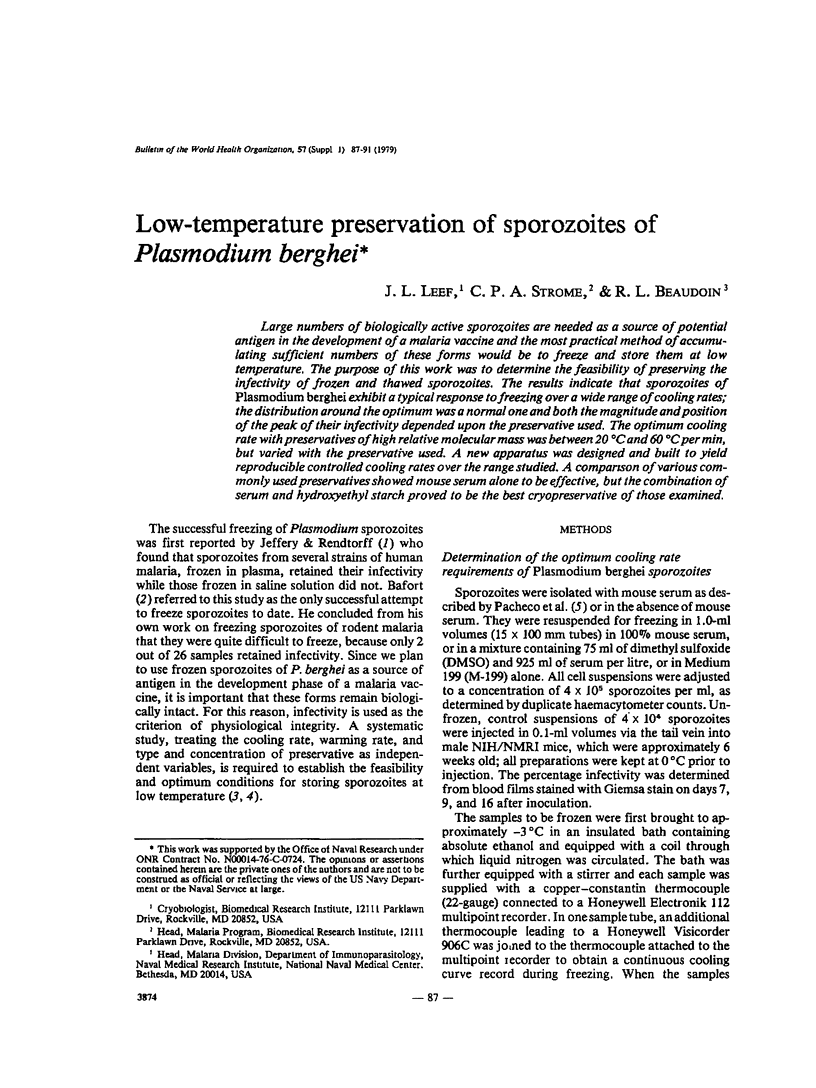
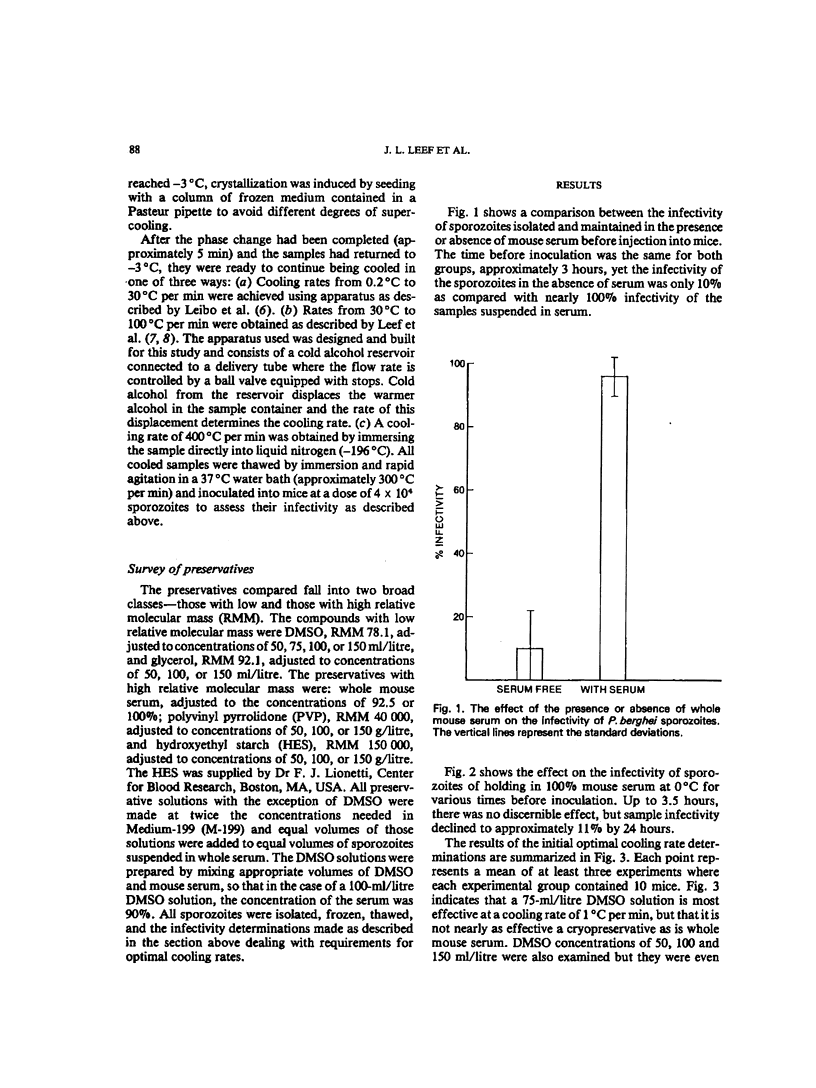
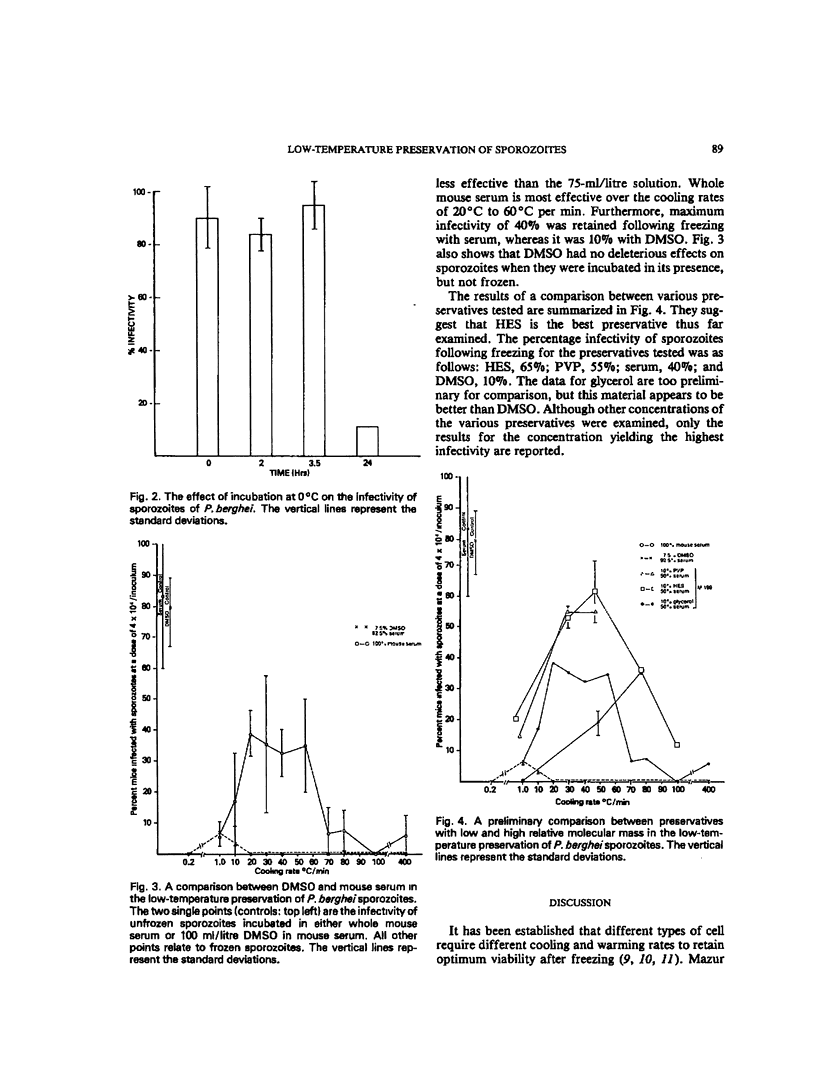
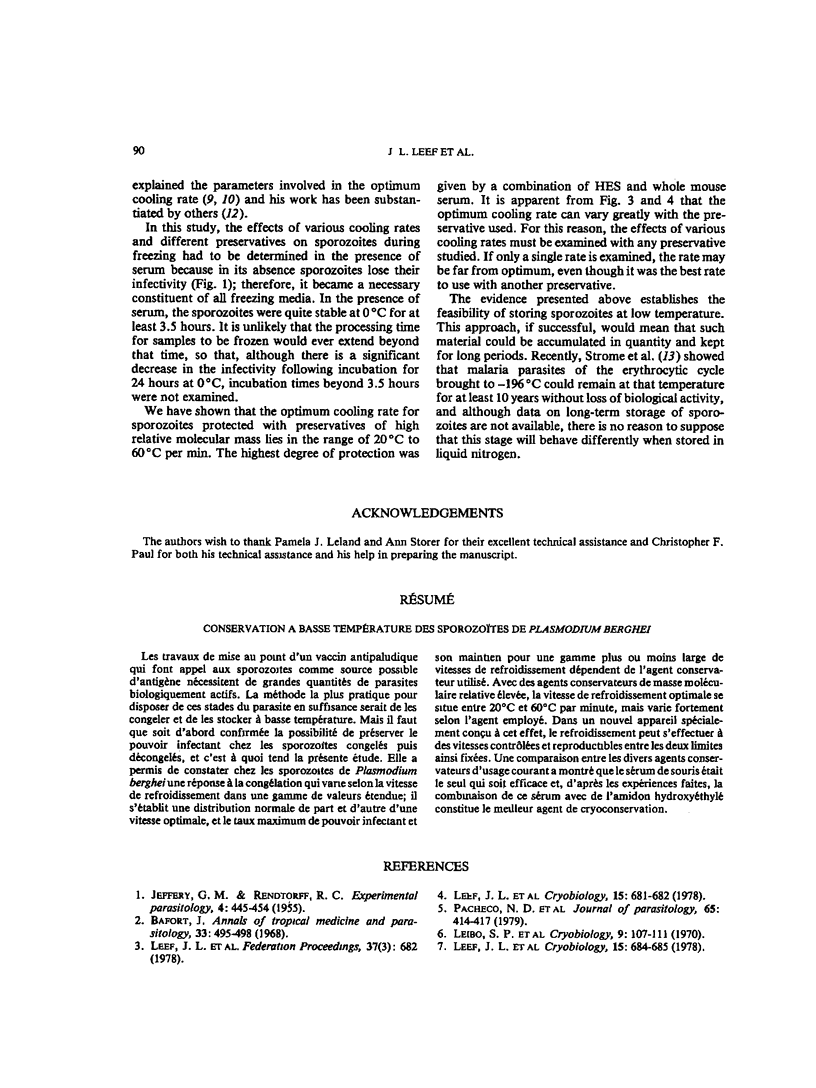
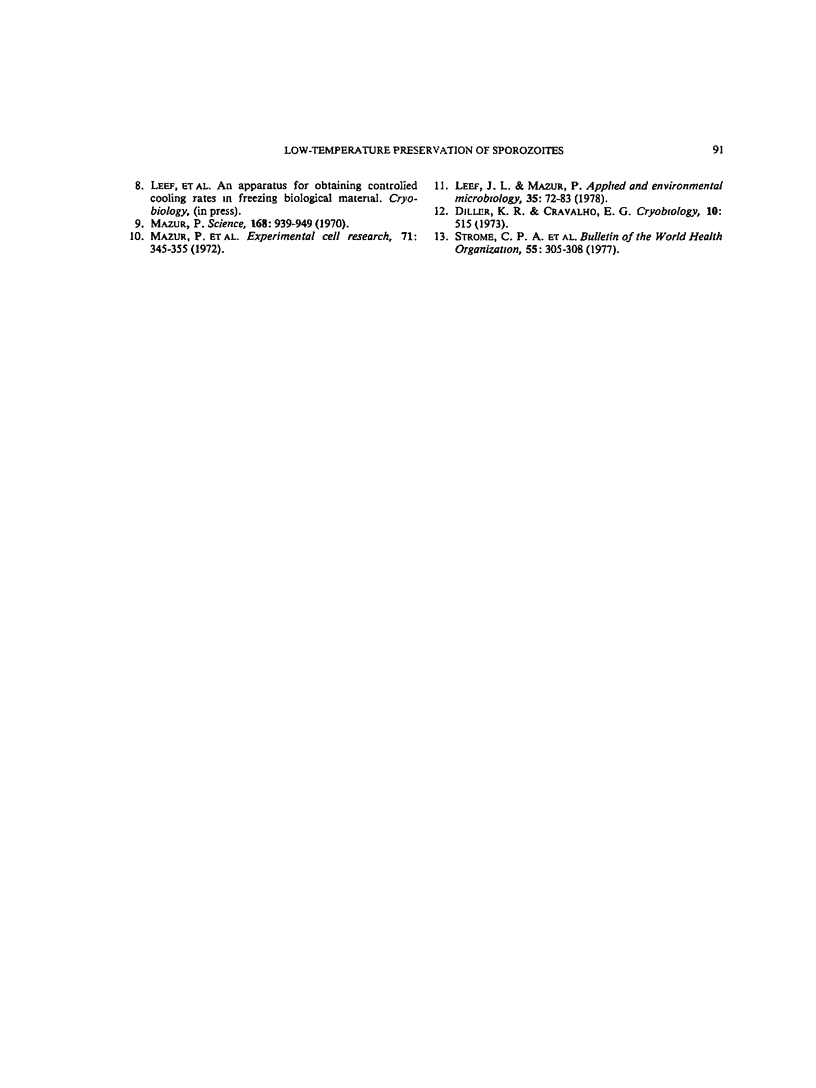
Selected References
These references are in PubMed. This may not be the complete list of references from this article.
- Leef J. L., Mazur P. Physiological response of Neurospora conidia to freezing in the dehydrated, hydrated, or germinated state. Appl Environ Microbiol. 1978 Jan;35(1):72–83. doi: 10.1128/aem.35.1.72-83.1978. [DOI] [PMC free article] [PubMed] [Google Scholar]
- Mazur P., Leibo S. P., Chu E. H. A two-factor hypothesis of freezing injury. Evidence from Chinese hamster tissue-culture cells. Exp Cell Res. 1972;71(2):345–355. doi: 10.1016/0014-4827(72)90303-5. [DOI] [PubMed] [Google Scholar]
- Strome C. P., Tubergen T. A., Leef J. L., Beaudoin R. L. A quantitative long-term cryobiological study of malarial parasites. Bull World Health Organ. 1977;55(2-3):305–308. [PMC free article] [PubMed] [Google Scholar]


